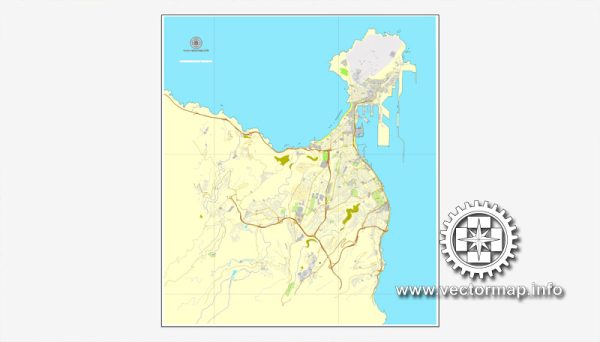Las Palmas de Gran Canaria, commonly known as Las Palmas, is the largest city in the Canary Islands, an autonomous community of Spain located off the northwest coast of Africa. The city has a rich history that dates back several centuries.
Pre-Spanish Era: Before the arrival of the Spanish in the late 15th century, the Canary Islands were inhabited by the indigenous Guanche people. The Guanches had their own unique culture, language, and way of life. The island of Gran Canaria, where Las Palmas is located, was one of the last Canary Islands to be conquered by the Spanish.
Spanish Conquest: In 1478, the Spanish Crown under Queen Isabella I and King Ferdinand II of Aragon initiated the conquest of the Canary Islands. The island of Gran Canaria was eventually captured by the Spanish in 1483.
Founding of Las Palmas: In 1478, the Spanish founded the city of Real de Las Palmas on the site of an existing Guanche settlement. It was initially a small port town, and it soon began to grow in importance due to its strategic location along the maritime routes to the New World. The city’s full name, Las Palmas de Gran Canaria, reflects its connection to the palm trees that were abundant in the area.
Colonial Era: Las Palmas played a significant role during the age of exploration and colonization, serving as a stopping point for Spanish galleons on their way to the Americas. The city’s economy thrived from trade, and it became a prominent trading and shipping hub.
British Occupation: In the late 18th century, the city briefly fell under British occupation during the Anglo-Spanish War (1796-1808), which left a notable impact on the city’s culture and architecture.
19th and 20th Century: Las Palmas continued to grow throughout the 19th and 20th centuries, becoming a major port, industrial, and cultural center in the Canary Islands. The city experienced economic growth and modernization, and it became a popular destination for tourists, especially after the rise of tourism in the Canary Islands in the mid-20th century.
Contemporary Era: Las Palmas has continued to evolve into a modern city with a diverse population. It is known for its beautiful beaches, historic architecture, and vibrant cultural scene. The city has become a key center for commerce, tourism, and services in the Canary Islands.
Today, Las Palmas de Gran Canaria is not only a thriving urban center but also a popular tourist destination known for its mild climate, beautiful beaches, and cultural attractions. Its rich history is still evident in the architecture, museums, and festivals that celebrate the city’s heritage.


 Author: Kirill Shrayber, Ph.D.
Author: Kirill Shrayber, Ph.D.